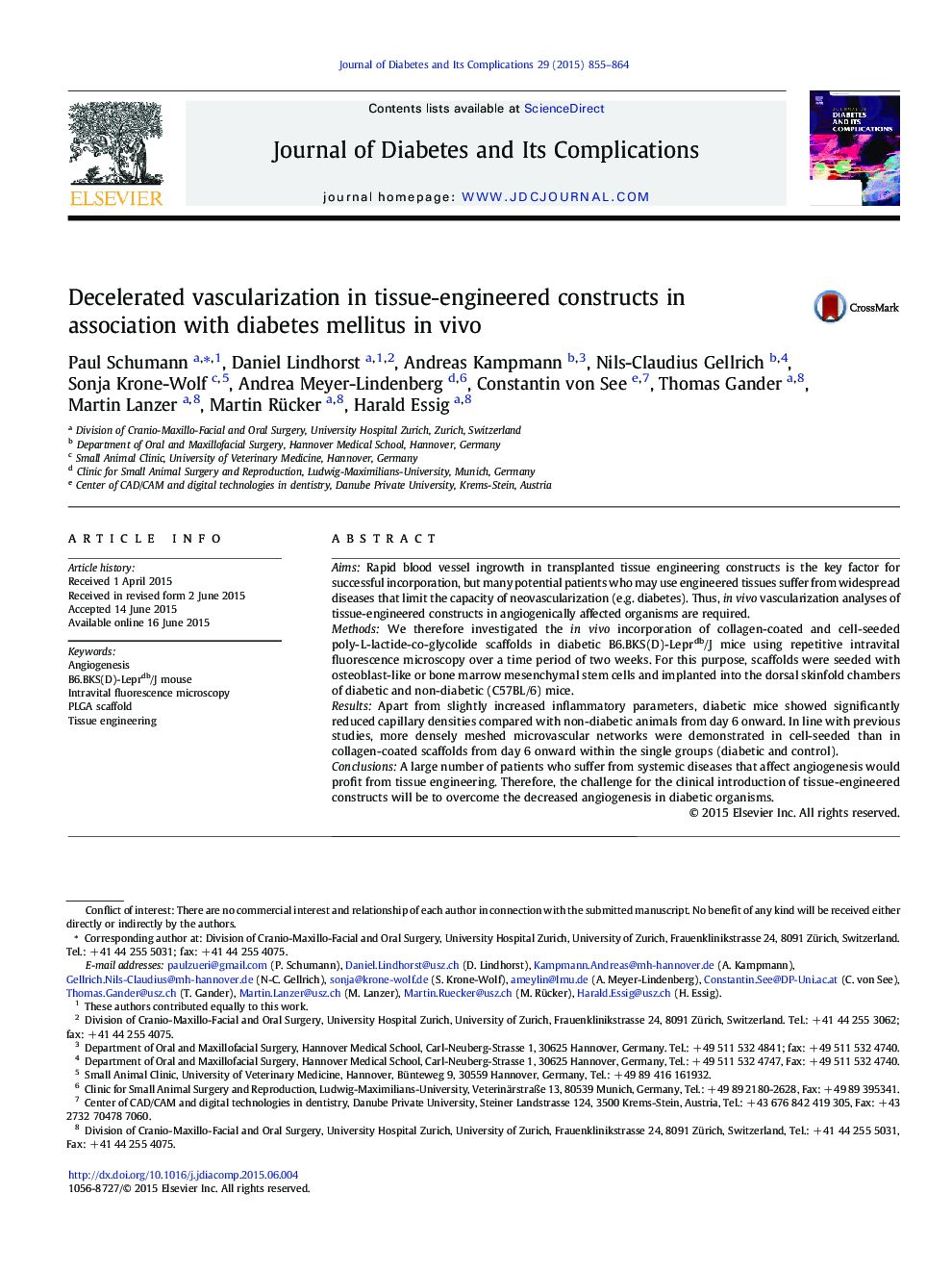| Article ID | Journal | Published Year | Pages | File Type |
|---|---|---|---|---|
| 2804113 | Journal of Diabetes and its Complications | 2015 | 10 Pages |
AimsRapid blood vessel ingrowth in transplanted tissue engineering constructs is the key factor for successful incorporation, but many potential patients who may use engineered tissues suffer from widespread diseases that limit the capacity of neovascularization (e.g. diabetes). Thus, in vivo vascularization analyses of tissue-engineered constructs in angiogenically affected organisms are required.MethodsWe therefore investigated the in vivo incorporation of collagen-coated and cell-seeded poly-L-lactide-co-glycolide scaffolds in diabetic B6.BKS(D)-Leprdb/J mice using repetitive intravital fluorescence microscopy over a time period of two weeks. For this purpose, scaffolds were seeded with osteoblast-like or bone marrow mesenchymal stem cells and implanted into the dorsal skinfold chambers of diabetic and non-diabetic (C57BL/6) mice.ResultsApart from slightly increased inflammatory parameters, diabetic mice showed significantly reduced capillary densities compared with non-diabetic animals from day 6 onward. In line with previous studies, more densely meshed microvascular networks were demonstrated in cell-seeded than in collagen-coated scaffolds from day 6 onward within the single groups (diabetic and control).ConclusionsA large number of patients who suffer from systemic diseases that affect angiogenesis would profit from tissue engineering. Therefore, the challenge for the clinical introduction of tissue-engineered constructs will be to overcome the decreased angiogenesis in diabetic organisms.
